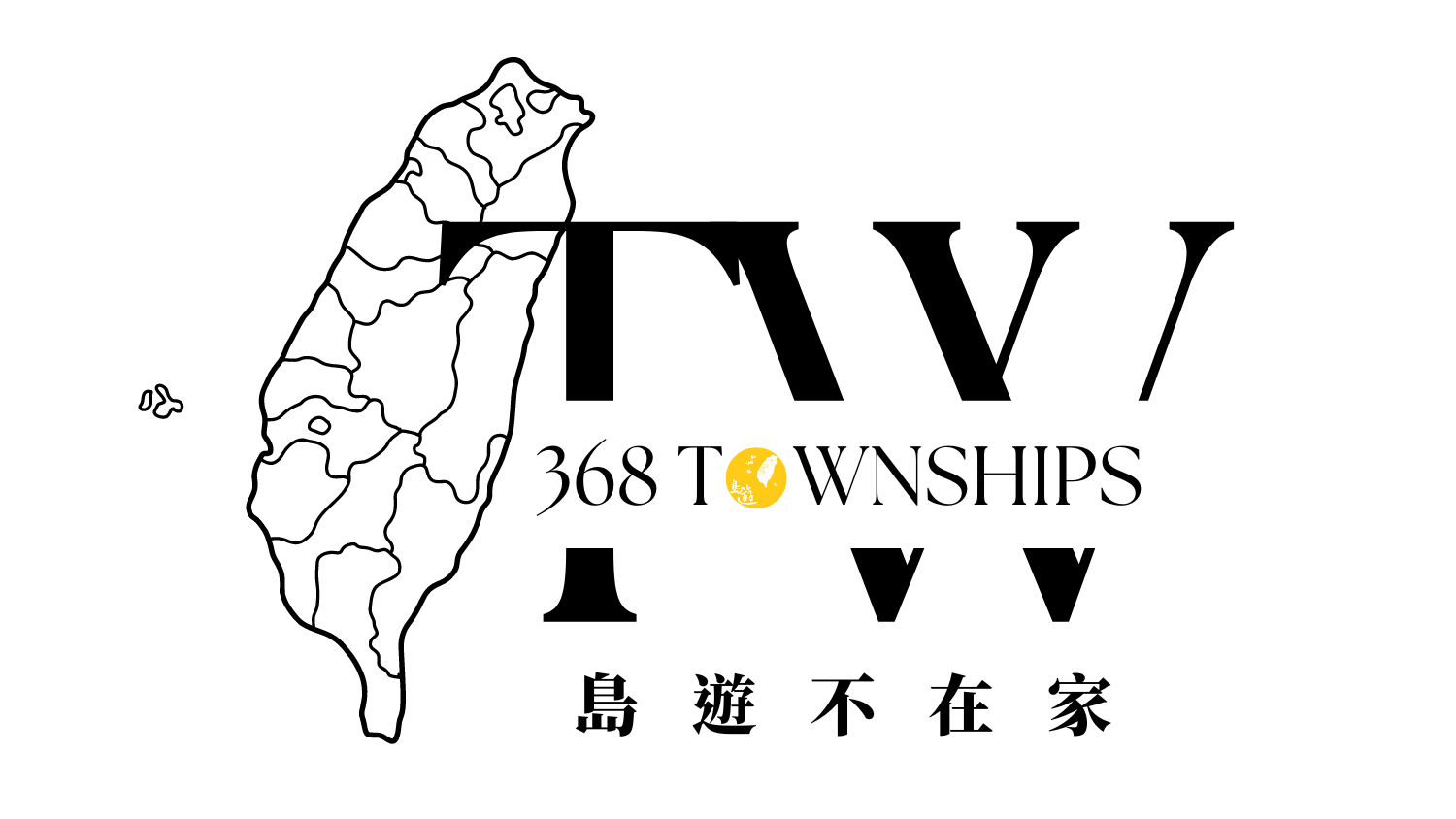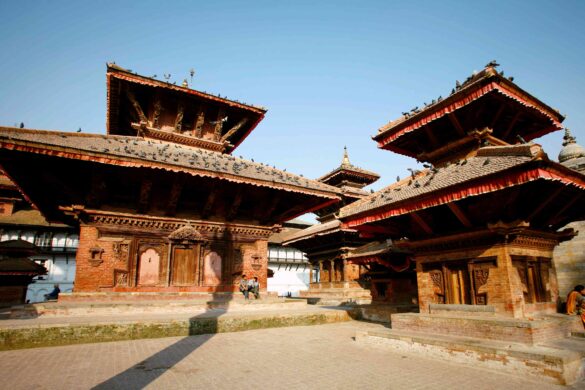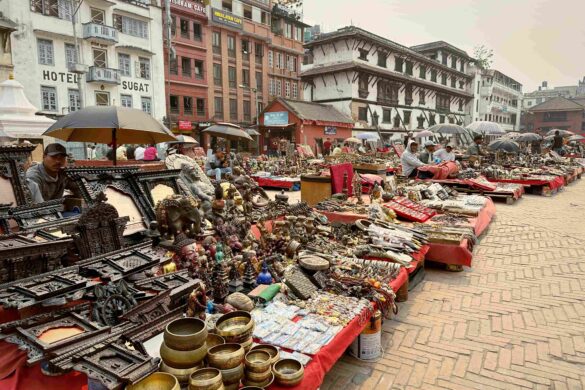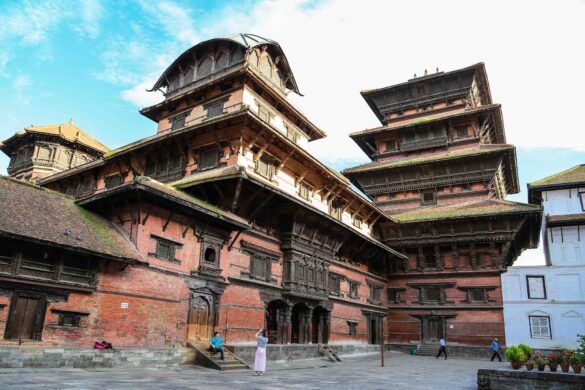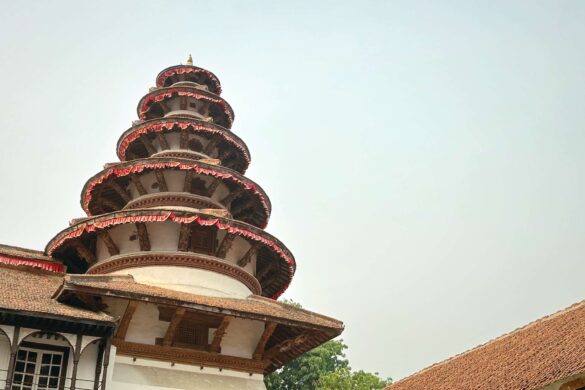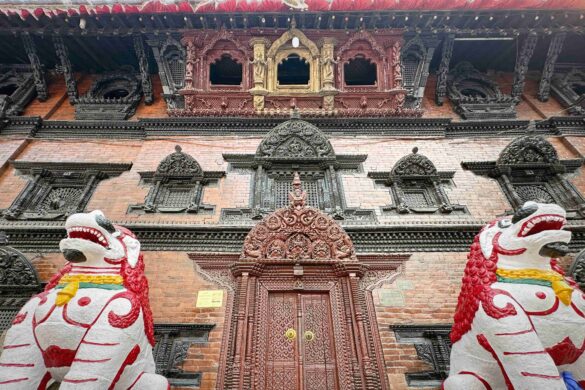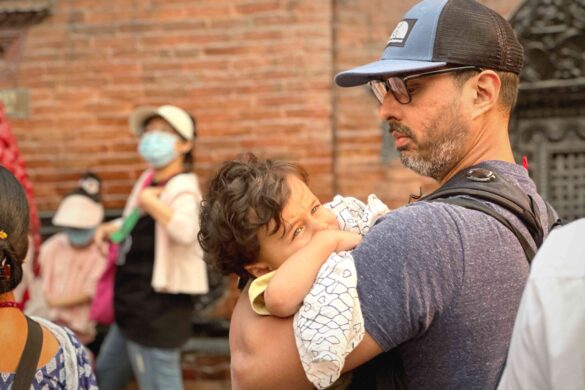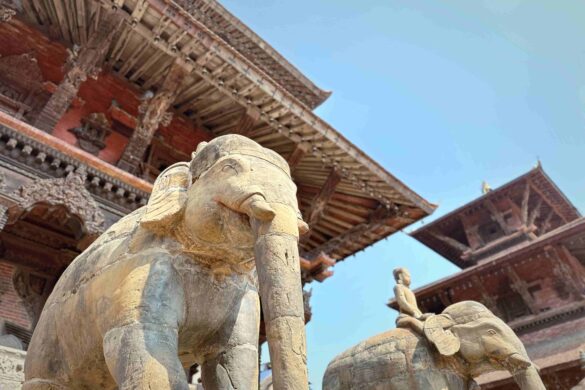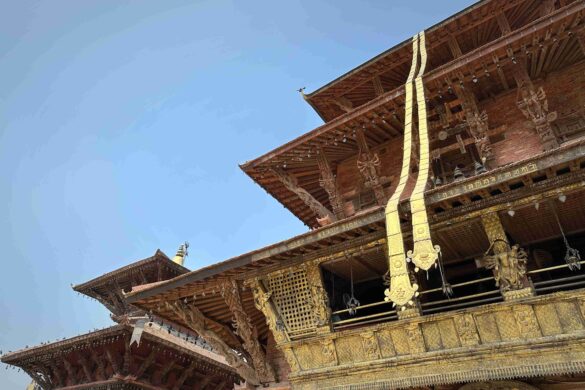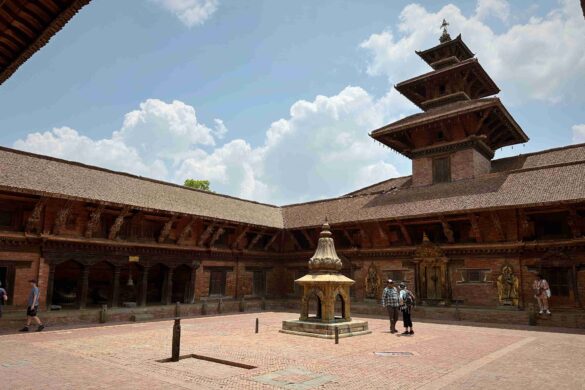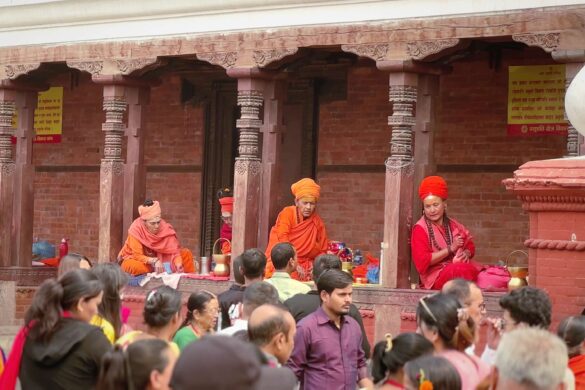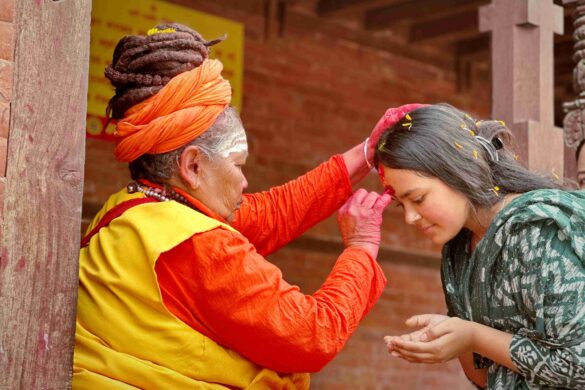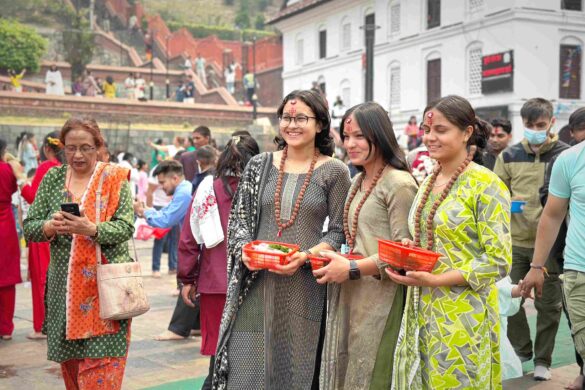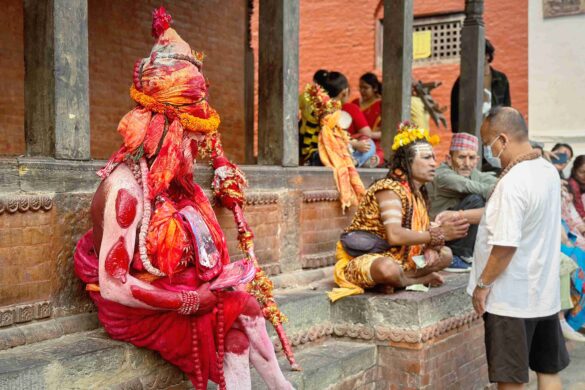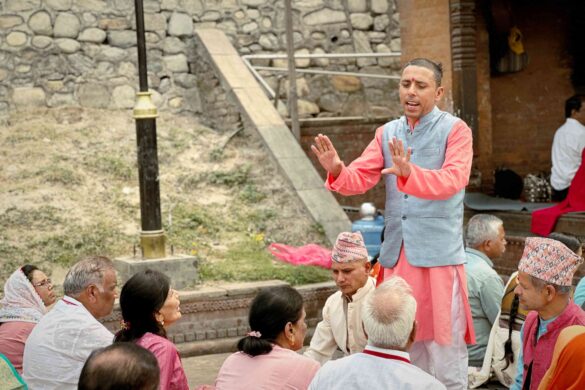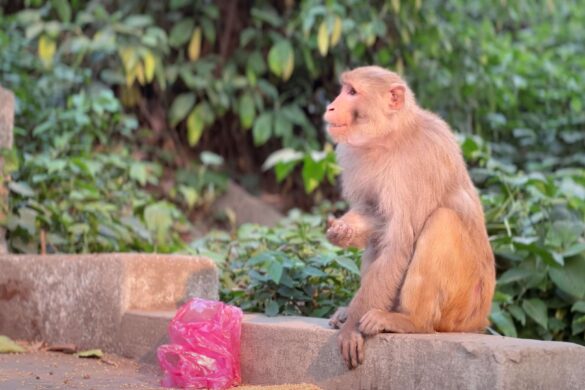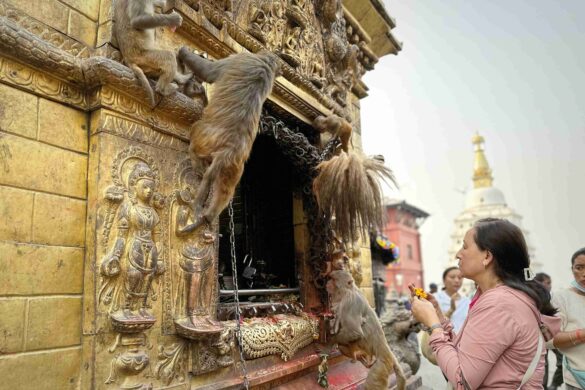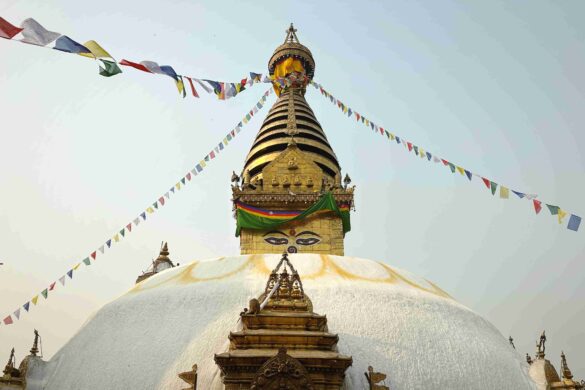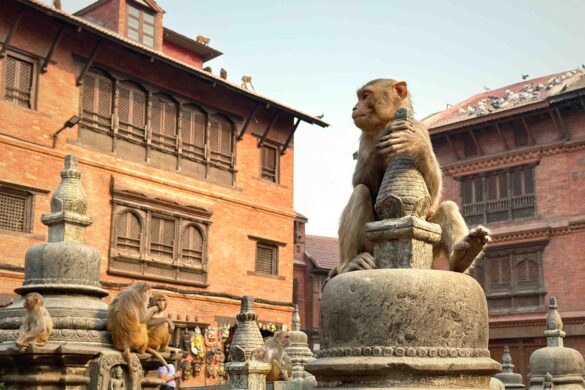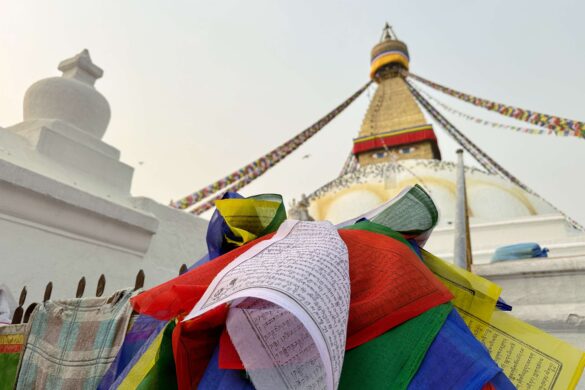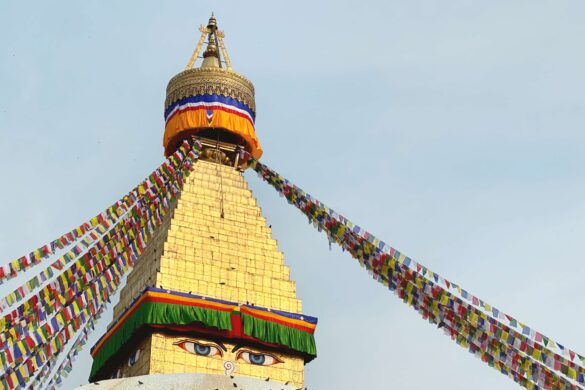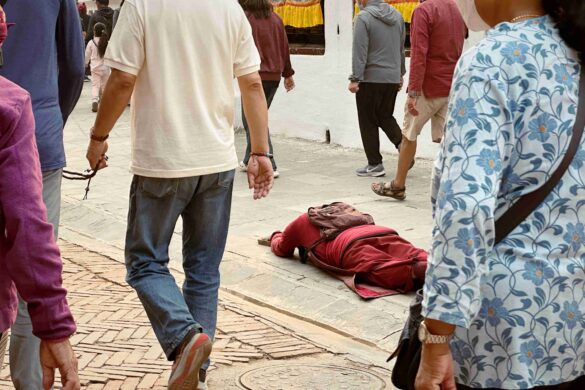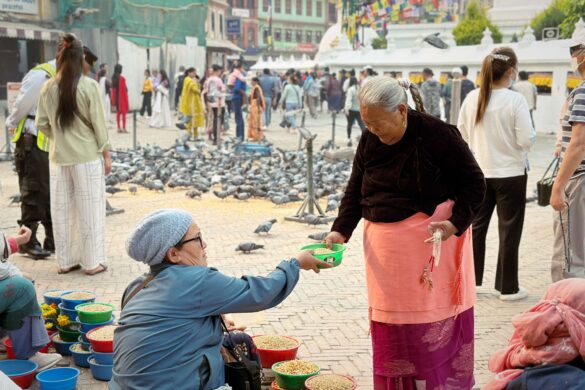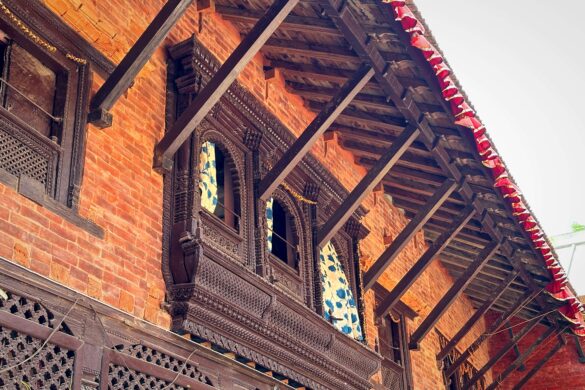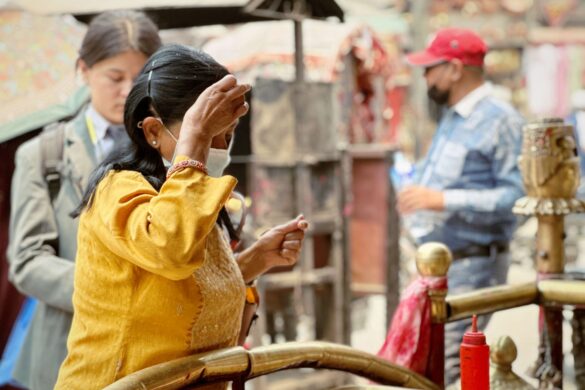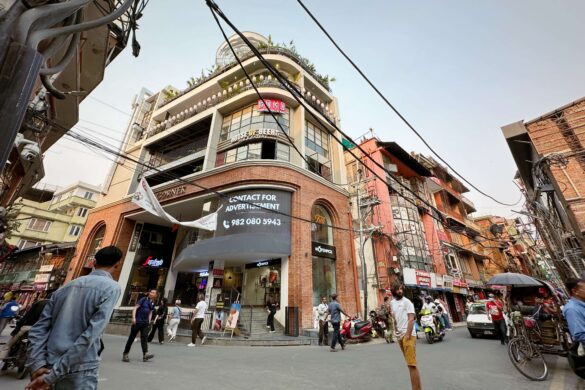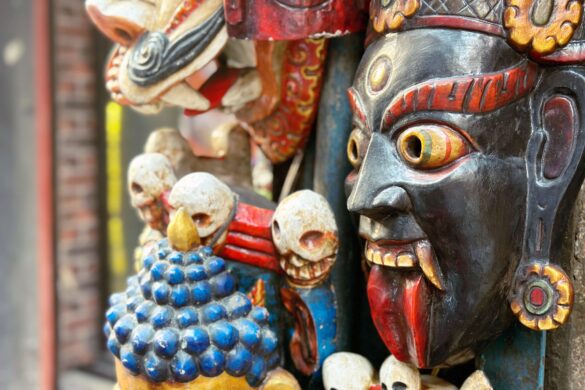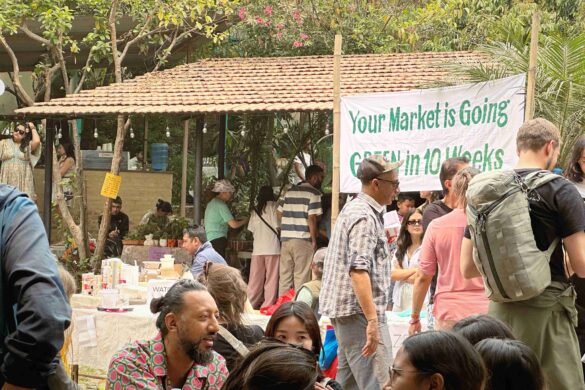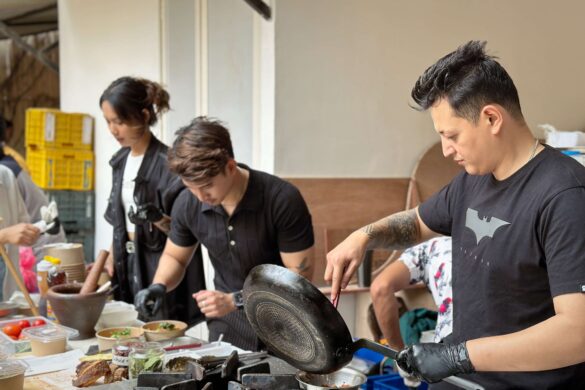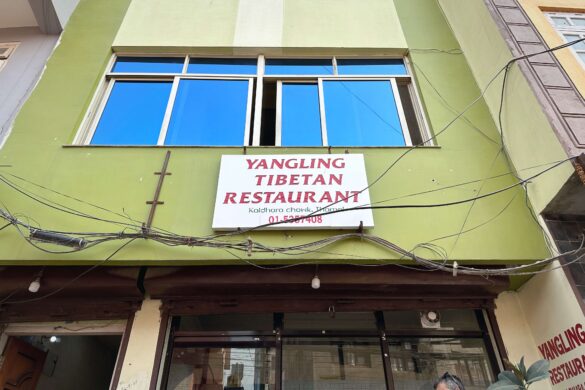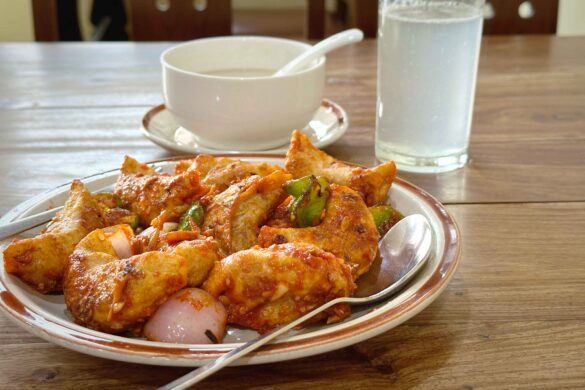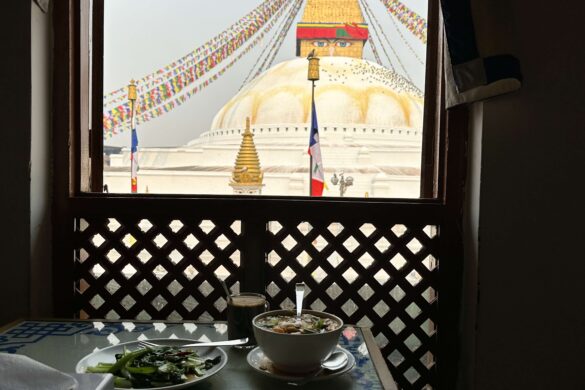最後更新/Last Updated:2025-03-13
Kathmandu is located in the center of the Kathmandu Valley in the Himalayas, near the border of Nepal and the Tibet Autonomous Region of China. The high altitude attracts many climbers, while its historic palaces, temples, and mysterious religious aspects draw others.
Contents
◦ World Heritage Sites
01|Kathmandu Durbar Square
In Nepali, "Durbar" means palace. There are three ancient palace squares: Kathmandu Durbar Square, Patan Durbar Square, and Bhaktapur Durbar Square. These three squares are listed as UNESCO World Heritage Sites.
Kathmandu Durbar Square, located in the city center, has many palaces and temples. The market selling handicrafts is also worth visiting.
The most famous building in the square is the Hanuman Dhoka, named after Hanuman, the monkey god in Hinduism. It used to be the residence of the Nepalese royal family.
On the south side of Kathmandu Durbar Square is the Kumari Ghar, the temple of the Living Goddess, which is a must-see attraction in Nepal.
◦ Kumari Ghar
In the 17th century, the king followed the long-standing tradition of worshipping the Living Goddess and developed a strict selection process: only girls who had never been injured, never bled, never been sick, and met all physical criteria could be chosen. They also had to fit into the clothes of the previous Living Goddess. Once chosen, the Kumari must live in the temple, cannot go out freely, and her feet must not touch the ground. She serves until her first menstruation, when the Goddess Taleju leaves her body, and she can return home.
If you want to see the Living Goddess, the best time is from 4 to 5 pm when she often appears at the window to accept worship from believers.
When the temple doors opened, people rushed in and waited in the courtyard for the Living Goddess to appear. The temple staff started giving instructions in English.
"When the Kumari appears, do not take photos! No videos!"
"No photos! No videos!"
"Or your phone and camera will have problems!"
Upon hearing this, tourists holding phones quickly put them away. When the Living Goddess finally appeared at the window on the second floor, people gasped in amazement, then fell silent. Wearing red clothes and with a large eye painted on her forehead, she looked around expressionlessly. In less than a minute, she went back inside, disappearing from the window.
Open Hours for Some Areas: 0900-1800 Ticket Prices: 1,000 NPR (05/2024)
02|Patan Durbar Square
Patan Durbar Square is located in front of the old royal palace in Patan. It made me appreciate the beauty of Nepal's traditional architecture even more! The red brick walls, detailed carvings, and golden decorations outside the temples left a deep impression on me.
Walking in the courtyard, you can feel the glory of the ancient royal city.
Open Hours for Some Areas: 1000-2200 Ticket Prices: 1,000 NPR (05/2024)
03|Pashupatinath Temple
By the Bagmati River stands the Pashupatinath Temple, one of the significant Hindu temples in Nepal. By the river, you can see stone platforms where local believers are cremated.
In Nepal, where more than 80% of the people are Hindus, visiting a temple during a festival means facing crowded scenes.
There was already so much happening around me. A long line of female priests was blessing the believers and marking their foreheads with bright red bindis, each one different with various designs and decorations. In the distance, groups of people led by their teachers were chanting. Finally, scary-looking ascetics were scattered in different corners.
Opening Hours: 1000-1700 Pashupati Nath Road, Kathmandu Ticket Price: 1,000 NPR (05/2024)
04|Swayambhunath Stupa
Swayambhunath Temple, located on a hill, is also known as the "Monkey Temple" due to the numerous monkeys that roam around. It is one of the important Buddhist temples in Nepal.
When I reached the temple, the rituals and the sounds around me made my mind go blank, and I didn't know where to go. So, I followed the crowd and turned the prayer wheels clockwise.
Besides the monkeys, the most famous feature of the stupa is the Buddha's eyes. The symbol that looks like a question mark between the eyes is the Nepali number "one," symbolizing unity and harmony.
Opening Hours: 24/7 Swayamhu Circle Road, Kathmandu Ticket Price: 200 NPR (05/2024)
05|Boudhanath Stupa
When the colorful prayer flags flutter, it is believed that the prayers are sent to the heavens, receiving the blessings of Buddha.
Boudhanath Stupa, also known as the "Wish-Fulfilling Stupa," is the largest stupa in Nepal and is considered a sacred place for Buddhists. The stupa's shape is similar to the one at the Swayambhunath Stupa, with a central dome and Buddha's eyes on all four sides. From the base to the top, it is divided into five parts, representing the five elements: earth, water, fire, air, and space. Above the Buddha's eyes, there are 13 tiers of a pyramid-shaped spire, symbolizing the 13 heavens and the path to enlightenment. When praying, believers must walk clockwise around the stupa, reciting prayers and turning the prayer wheels.
Opening Hours: 24/7 Ticket Price: 400 NPR (05/2024)
◦ Must-see Attractions
01|Lalitpur Kumari Ghar
The Kumari living in Patan can be worshipped up close. When I arrived at the Lalitpur Kumari Ghar, I rang the doorbell as instructed. A man and a woman peeked out from the second floor and told me I could come up in ten minutes. Inside, the light was dim, and there were a few photos of the Living Goddess on the walls. I carefully climbed the wooden stairs, passed through a small door, and there Kumari was, sitting on a throne, looking at me with a blank expression. Following the temple staff's instructions, I knelt down and touched Kumari's red feet. When I stood up, the Living Goddess marked my forehead with a bright red bindi, giving me her blessing.
As I left the small room, went downstairs, put on my shoes, and stepped outside, I could only remember a few key points: I was relieved that the Living Goddess showed no emotion. If she had shown any, I would have been very nervous. Nepali people believe that if the Living Goddess cries, laughs, or trembles, it often predicts disaster.
Also, red truly is the heart of Hinduism. The Living Goddess's feet were bright red, just like the statues in various temples.
After the worship, I sat outside in a daze. After a while, I heard cartoon music and sound effects from the second floor. Then I realized that the person I had just seen was not only a goddess but also a little girl.
Location: Search for "Lalitpur Kumari Ghar" on the Google Map
02|Annapurna Temple
This temple is located at the Asan Tole crossroads in the Thamel area and is considered a temple of wealth by locals. The goddess Annapurna, who oversees wealth, food, and commerce, draws many believers who come to pray for prosperity.
Opening Hours: 24/7 Asan Tole, Kathmandu
03|Thamel
Since there are many hotels in this area, most visitors to Kathmandu choose to stay here. You can also find a variety of finely crafted handicrafts, including silverware, jewelry, Gurkha knives, and masks, which are very popular with tourists.
04|The Garden of Dreams
This neoclassical garden in the city center was built by a Nepalese marshal in the 1920s. The garden features elegant buildings, ponds, and lush vegetation, making it an oasis in the city.
Opening Hours: 0900-2200 Tridevi Sadak, Kathmandu Ticket Price: 400 NPR (05/2024)
05|Farmers’ Market at Le Sherpa
The Saturday-only farmers' market, recommended by local friends, brings together farmers and cooks from all over Nepal. They offer fresh organic vegetables, fruits, homemade cheese, bread, and various handmade products. The market has a relaxed atmosphere and is a great place to taste local food and make new friends.
Opening Hours: Every Saturday 0800-1230 Maharajgunj, Kathmandu
◦ The Video
◦ Restaurants
01|Yangling Tibetan Restaurant
I discovered this Tibetan restaurant thanks to strong recommendations from several locals. I especially love their momos, whether steamed or fried. They are perfectly cooked, and the spicy filling is incredibly tasty!
Opening Hours: 1200-2100, closed on Saturdays. Kaldhara Marg, Kathmandu
02|Newa Momo Restaurant
This small shop in an alley is hard to find but worth the effort. It's a great place to understand local tastes and prices. Their cheese and potato momos are delicious, and I never get tired of them!
Opening Hours: 0900-2100 Kwabahal, Thamel Marg, Kathmandu
03|Yala Café & Coffee Shop
This café, which seems perfect for social media photos, is affordable, and the staff is very friendly. The rich and delicious black coffee, along with the relaxed atmosphere, are the main reasons I recommend it!
Opening Hours: 0700-2200 Kwabahal, Thamel Marg, Kathmandu
04|BOD THAP
At Boudhanath Stupa, besides walking around the stupa, you must try the surrounding restaurants, especially those on the second or third floor with open windows. I recommend BOD THAP's stir-fried vegetables and Tibetan noodle soup, Thenthuk. The prices are reasonable, and the chef's skills exceeded my expectations! If you're lucky enough to get a seat by the window, you can enjoy the food while watching the changing light on the stupa.
Opening Hours: 0800-2100 Stupa Circle, Boudhanath Sadak, Kathmandu
◦ Kathmandu Travel Guide
01|Things To Do in Kathmandu
🏛️ Explore Kathmandu's UNESCO 7 Heritage Sites Tour
🏛️ Patan and Bhaktapur Tour
☀️ Nagarkot Sunrise Tour
02|Transportation in Kathmandu
🚗 Tribhuvan International Airport Transfers
03|Hotels in Kathmandu
🏨 Everland Kathmandu Hotel
🏨 Fairfield by Marriott Kathmandu
🏨 Pahan Chhen
